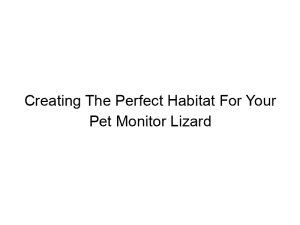Creating a thriving environment for your chameleon requires more than just the right temperature and humidity. A safe and secure vivarium is crucial for your reptile’s health, well-being, and longevity. This comprehensive guide will walk you through every step of building a secure habitat, covering everything from choosing the right enclosure to maintaining optimal hygiene and preventing escape. We’ll explore essential factors to ensure your chameleon feels safe, secure, and thrives in its artificial environment.
Chameleons are highly specialized creatures with specific needs. Their natural habitats often involve dense foliage, branches for climbing, and specific temperature and humidity gradients. Replicating these conditions in your vivarium is paramount to their health and happiness.
The size of your vivarium depends on the size of your
chameleon species. A larger enclosure is always preferable, allowing for more space to create a varied and stimulating environment. Materials like glass or screen enclosures offer good visibility and maintainability. Wood enclosures can also be used but require careful sealing to prevent moisture damage and escape.
Constructing a Secure Enclosure: Preventing Escapes
Secure Lid and Ventilation
The lid of your vivarium should be securely fastened to prevent escapes. Screen lids provide ventilation but require extra care to ensure they are securely attached. Consider using clips, latches, or even small weights to prevent accidental openings. Adequate ventilation is also vital, preventing the build-up of harmful gases and maintaining proper humidity levels.
Substrate Selection and Escape Prevention
The substrate you choose plays a significant role in preventing escapes. Avoid loose substrates like sand or soil which chameleons might easily burrow through. Instead, opt for paper towels, reptile carpet, or coconut fiber mats that provide good drainage and prevent burrowing.
Environmental Enrichment: A Safe and Stimulating Habitat
Branch Placement and Climbing Opportunities
Chameleons are arboreal animals, meaning they spend most of their time in trees. Providing a variety of branches of different sizes and textures will give your chameleon ample opportunities for climbing, basking, and exploring. Make sure branches are securely attached and won’t easily fall.
Live Plants and Foliage
Live plants are not just aesthetically pleasing but also vital for creating a humid microclimate and providing hiding places for your chameleon. Choose non-toxic plants that are suitable for a tropical environment. Consider adding plants like bromeliads, pothos, or ficus.
Maintaining Hygiene: Disease Prevention
Regular Cleaning and Disinfection
Maintaining a clean vivarium is essential for preventing the growth of harmful bacteria and parasites. Regular cleaning, using reptile-safe disinfectants, is crucial. Remove waste daily and perform a thorough cleaning of the entire enclosure at least once a month.
Proper Waste Disposal
Always dispose of waste properly to prevent the spread of disease. Use separate containers for waste and disinfect them before discarding.
Temperature and Humidity Control: Vital for Chameleon Health
Understanding Temperature Gradients
Chameleons require a specific temperature gradient within their enclosure. This allows them to thermoregulate by moving between warmer and cooler zones. Use a combination of heat lamps and under-tank heaters to maintain the correct temperature range. Ensure the setup doesn’t cause excessive heat buildup.
Humidity Control: Misting and Ventilation
Chameleons need a certain level of humidity to keep their skin hydrated and prevent respiratory issues. Regular misting is often necessary, but it’s vital to avoid over-misting, which can lead to mold growth. Proper ventilation helps prevent this issue. Using a hygrometer can help you maintain the ideal humidity levels.
Lighting: Essential for Growth and Health
UVB and UVA Lighting
Chameleons require specific UVB and UVA lighting to synthesize vitamin D3 and maintain their immune system. Ensure that you have a high-quality UVB bulb appropriate for your enclosure. UVA lighting contributes to color change and overall well-being.
Optimal Lighting Schedule
A typical chameleon lighting schedule includes 12 hours of UVB and UVA light followed by 12 hours of darkness. You can utilize timers to automate this process.
Feeding and Hydration: Nutritional Requirements
Providing a Balanced Diet
Chameleons require a diverse diet that consists of live insects, such as crickets, dubia roaches, and mealworms. Dusting insects with vitamin and mineral supplements is crucial to ensure your chameleon gets all the essential nutrients.
Ensuring Adequate Hydration
Chameleons obtain most of their hydration through the insects they eat. However, providing a drip system or misting the plants regularly will also contribute to their hydration.
Monitoring Your Chameleon’s Health
Regular Observation
Regularly observing your chameleon for any signs of illness or stress is crucial for early intervention. Observe their appetite, activity levels, and droppings. Any changes should prompt further investigation.
Veterinary Care
Just like any other pet, your chameleon may need occasional veterinary care. Having a reptile veterinarian available is crucial in case of emergencies or illnesses.
Potential Hazards in the Vivarium
Toxic Plants
Avoid using toxic plants in your vivarium as they could pose a danger to your chameleon. Always research the toxicity of any plant before introducing it into the enclosure.
Unsafe Decorations
Sharp or easily-breakable decorations can injure your chameleon. Choose decorations that are smooth and will not pose a threat.
Building a Secure and Safe Vivarium: A Step-by-Step Guide
Choosing the Right Enclosure and Components
Selecting the correct size, materials, and components is the first step. Consider the size of your chameleon and its future growth.
Assembly and Setup
Once you have all the components, you can start assembling the vivarium, ensuring the branches and other elements are securely attached.
Acclimating Your Chameleon to the Vivarium
Gradually acclimate your chameleon to its new environment to reduce stress.
Frequently Asked Questions
What are the most common mistakes people make when setting up a chameleon vivarium?
Common mistakes include using unsuitable substrate, providing insufficient UVB lighting, neglecting humidity control, and choosing toxic plants.
How often should I clean my chameleon’s vivarium?
Daily spot cleaning of waste and a thorough cleaning of the enclosure at least once a month is essential.
What type of UVB bulb is best for chameleons?
High-quality UVB bulbs, specifically designed for reptiles, are crucial. Consult a reptile specialist or your veterinarian to determine the appropriate bulb type and wattage.
My chameleon seems lethargic; what should I do?
Lethargy could indicate illness or stress. Check the temperature, humidity, and lighting. Consult a veterinarian if you suspect an underlying health issue.
Can I use household cleaners to clean my chameleon’s vivarium?
No, household cleaners are generally toxic to chameleons. Use reptile-safe disinfectants.
Final Thoughts
Building a safe and secure vivarium for your chameleon is a rewarding experience that ensures your pet’s well-being and longevity. By following these guidelines, you can create a thriving environment that closely mimics your chameleon’s natural habitat. Remember that ongoing observation, maintenance, and proactive health care are key to keeping your chameleon healthy and happy. Investing time and resources into setting up the optimal environment will be worth the effort as you witness the joy and fascination your chameleon brings to your home. Don’t hesitate to consult with experienced reptile keepers or veterinarians for any additional questions or concerns. Creating a successful chameleon vivarium is a journey, and with dedication and attention to detail, you can create a home where your chameleon will truly flourish.




